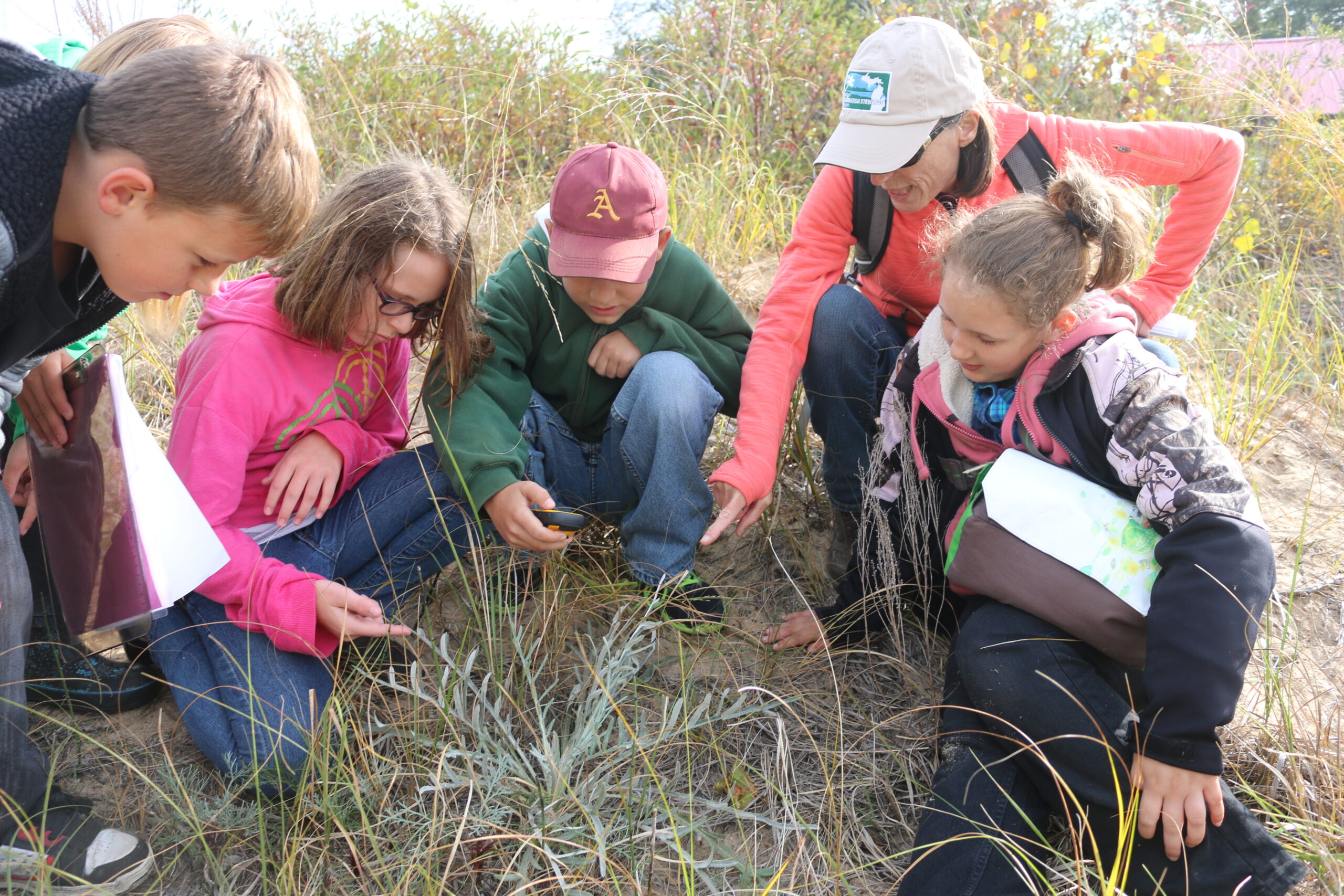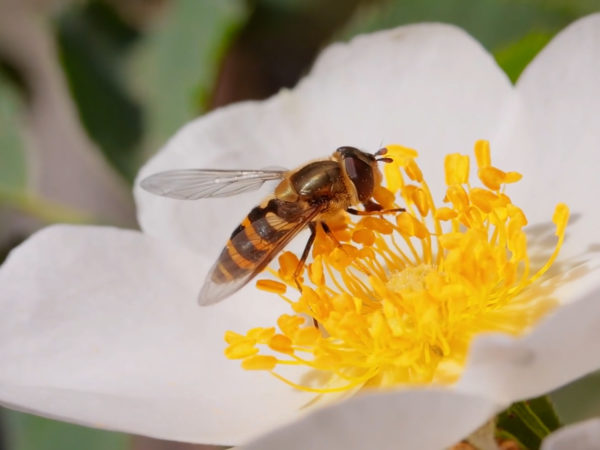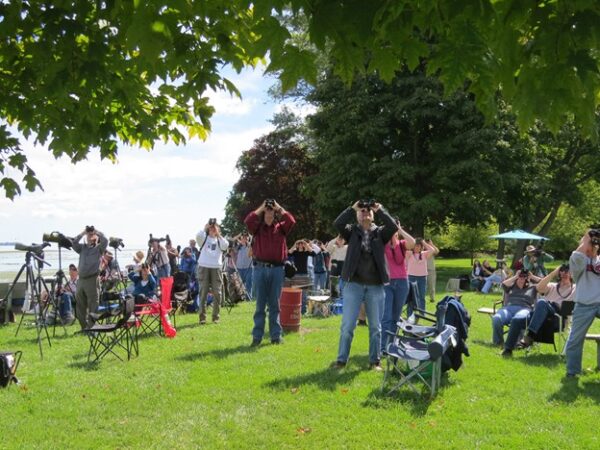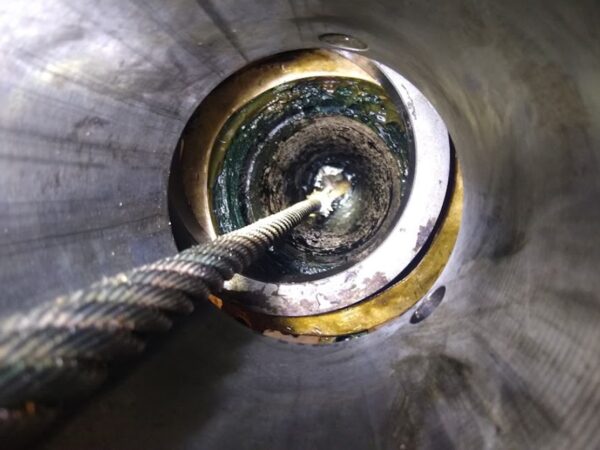
Science Says What? is a monthly column written by Great Lakes now contributor Sharon Oosthoek exploring what science can tell us about what’s happening beneath and above the waves of our beloved Great Lakes and their watershed.
As spring comes to Saginaw Bay, a group of elementary school students are preparing to play an important role in a long-term scientific study. Every year since 2015, a 5th-grade class from Au Gres-Sims school in northeast Michigan has taken a boat to Charity Island to assess the impact of local efforts to remove invasive phragmites and protect the threatened Pitcher’s thistle.
Armed with GPS units and data entry sheets, the students walk carefully across the island’s fragile sand dunes, noting each species’ location and density. They also assess the Pitcher thistles’ health and collect seeds for restoration.
The verdict? Their data show spraying has substantially decreased the phragmites population, leaving more room for the Pitcher’s thistle, whose numbers have increased slightly. But the students’ research also shows new phragmites are still washing up and taking root on the island’s sandy shores. A mixed bag, but valuable information for land managers.
These young researchers, working with the U.S. federal government on the restoration effort, are committing Citizen Science – something the National Parks Service (NPS) defines as the public voluntarily helping to conduct scientific research.
“Citizen scientists may design experiments, collect data, analyze results, and solve problems,” according to the NPS. In fact, sometimes the best way to get information needed to solve problems is by recruiting non-scientists.
As the NPS points out, managers might need to know when certain kinds of plants bloom during the spring. Data on flower timing can help them know which butterflies need special protection, or when to mow a field. They might not have enough time to count all those flowers across the park. But hundreds of visitors hiking in the park can use a mobile app to record when and where flowers bloom.
“It’s different than just collecting trash on the beach,” said Meag Schwartz, network coordinator for Northeast Michigan Great Lakes Stewardship Initiative. “That’s a feel-good exercise and has value, but no science angle.”
In other words, it doesn’t give us the insight we need to responsibly manage our natural resources.
Quality control matters
But can we really rely on grade school students (or even adults) to collect reliable data, much less analyze it in a way that gives us significant insights?
A good question, Gregory Ford tells me. Ford is director of water programs for SwimDrinkFish, which runs community-based water monitoring hubs on the Canadian side of the lakes. In his experience, making sure non-scientists, even young ones, collect reliable data is actually not that hard.
“I figure if I can learn to take water quality samples, so can my neighbor,” says Ford.
Scientists from Michigan State University and Michigan Sea Grant, for example, show the Au Gres-Sims students how to identify phragmites and thistles and how to use the GPS units. They also double-check their work.
SwimDrinkFish takes a similar approach with its volunteers who do a lot of water quality sampling, often leading to remediation. In 2004, a group of Toronto citizens fed up with constant closures at Bluffers Beach Park due to high e. Coli counts, worked with SwimDrinkFish to trace the contamination to a storage pond. They used their findings to convince the local conservation authority to fix the problem and the beach is now open about 80% of the time.
While it helps that modern water probes are bullet-proof in terms of returning accurate readings, SwimDrinkFish volunteers are also carefully schooled in quality control. They use something called field blanks to make sure they don’t inadvertently contaminate samples.
In water sampling experiments, a field blank is a bottle of contaminant-free distilled water that scientists bring into the field. It travels in the same cooler as the lake or river water samples and is analyzed back at the lab along with the real samples.
If the field blank is found to have contaminants, it’s an indication the real samples could have been contaminated somewhere along the way. It suggests the real samples are not reliable indicators of water quality and the readings are discarded.
The take-home message, says Ford, is that data collected by properly trained citizen scientists, using quality control indicators like field blanks, is just as reliable as that collected by bona fide scientists.
Sometimes, citizen scientists can even help uncover unexpected linkages. At SwimDrinkFish’s water monitoring hub in Niagara, Ontario, water quality monitoring suggests rotting nuisance algae may be boosting e. Coli levels by providing the perfect environment for them to reproduce.
“It’s still emerging science,” Ford said. “But with these findings, we’re beginning to understand more. Passion goes a long way to making sure results are valid. Citizen scientists really want to do a good job.”
Catch more news on Great Lakes Now:
Science Says What? Microplastic pollution — how worried should we be?
Science Says What? Climate change, deluges and snow days
Featured image: Young researchers from northeast Michigan. (Photo Credit: GLN)




